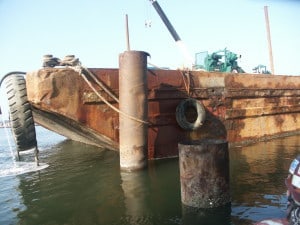Good morning to Captain and crew alike and welcome to the Admiralty Docket. Today our topic is chartering

vessels.
Clients and friends alike often ask the Admiralty Lawyers questions about charters. What are they? How do they work? What exactly is a “bareboat charter”? What kind of charter is it when I go offshore fishing on the JABEZ or the
TEASER 2? The following is a summary of the very basics of charters and how they work in the maritime industry.
As a general rule vessels, regardless of size, are expensive to construct, purchase, and maintain. After expending large amounts of money to purchase a vessel, all ocean going merchant ships, tugboats, or sportfishing vessels, and other seagoing vessels must be maintained to be able to withstand wind and waves, sun and rain, saltwater, electrolysis, and a host of other marine perils. Expensive regular maintenance of vessels and their equipment is essention to extend the benefits of construction requirements.
The utility and beauty of a sound and seaworthy vessel on the one hand and the considerable expense of ownership on the other hand, have led to a considerable interest in chartering. Leasing or renting a vessel is called chartering. Oral agreements for charter are enforceable, but subject to problems of proving the actual terms of the agreement. In maritime terms, a written charter or lease agreement is called a charter party. Although there exist many different charter party forms for use in specific trades or under specific conditions, all fall into three general categories of charters.
The first category includes demise charters, also called bareboat charters. Demise charters provide that, for the time of the charter party, the charterer becomes the virtual owner of the vessel, taking the vessel without crew, and assuming full control of and responsibility for the operation and navigation of te vessel. With respect to liability for any injury or damages to any third party, a demise charterer is regarded as the owner. The length of a demise charter may be defined in terms of a specific time or by designated voyages. To constitute a demise, the owner must relinquish possession, command, and navigation of the vessel so far as to be tantamount to, though just short of, an outright transfer of ownership.
The second category includes time charters. Under a time charter, the services of the vessel are engaged for a fixed period of time for the carriage of goods or passengers for as many voyages as can fit into the time period of the charter. The charterer merely rents space on the vessel, and the vessel owner retains control over management and navigation of the vessel, but the charterer designates the ports of call. The charterer normally remains liable for arrangements for loading and discharging cargo at its expense. Absent an agreement to the contrary, a time charterer has no control over the vessel and assumes no liability for negligence of the crew or for unseaworthiness of the vessel.
The third category includes voyage charters. Under a voyage charter, the carrying capacity of a vessel is engaged to carry a full cargo (or full compliment of passengers) on a defined number of voyages between specific ports. The shipowner retains control over management and navigation, while the charterer is responsible for arrangements relative to loading and discharging cargo, usually at its expense.
Most of your offshore fishing excursions would probably fall under the voyage charter category – to the Gulf Stream and back, for instance, although presumably some could fall into the time charter category depending upon the specific terms of the charter.
More next week on the Admiralty Docket. Until then, remember that your rights and responsibilities change as you approach the shore and may God Almighty grant you pleasant sailing.
 vessels.
vessels.
 vessels.
vessels.
 vessels.
vessels.